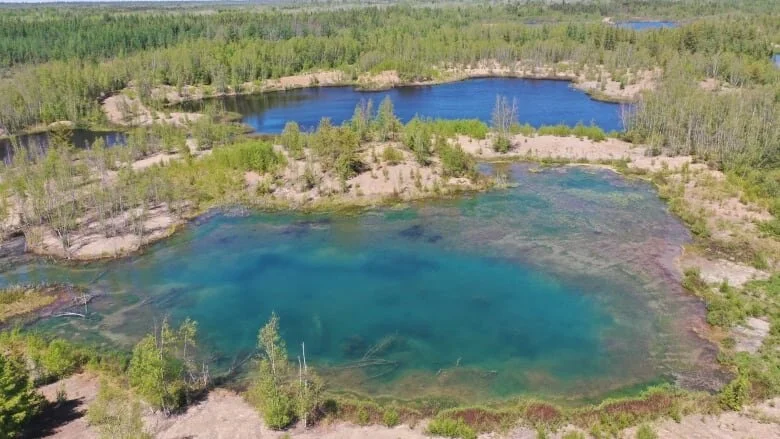"A once-in-a-decade event" is how Jeffery Langille describes the University of New Brunswick's lead role in a NASA mission. Langille is the lead instrument scientist for the spatial heterodyne observations of water, also known as the SHOW instrument. It's one of three specialized instruments that are part of the high-altitude aerosol, water vapour, and clouds, or HAWC, instrumentation.
Blue-green algae on the rise in St. John River, says UNB researcher
An associate professor of biology at the University of New Brunswick is warning residents about blue-green algae popping up along the St. John River this summer. Janice Lawrence says mats of cyanobacteria will probably start lifting off the river bottom and washing ashore any day now. "That's when they become dangerous," said Lawrence, who has been studying blue-green algae along the St. John River for the past three years.
Tropical oasis in N.B.? Nope — just remnants of Minto's mining history
"Every one of these bodies of water are man-made — there's hardly any natural ones here," he said, adding that some of the ponds are more than 30 metres deep. Allison Enright, an assistant professor of aqueous and environmental geochemistry at the University of New Brunswick, has studied the water at the former coal-mining site. She said there are tiny sediment particles in the water, remains from the mining activity and invisible to the naked eye. "They tend to stay floating or suspended within the water of the lake, and then this interacts with the light on the surface and in the water body to give you this really bright blue colour," she explained. As for why some of the ponds are a different colour blue, Enright said it just depends how much sediment is in each body of water. Despite the peculiar hues, she said, it's not dangerous. "In this area, over several decades of efforts to remediate, the pH of this water has been made completely safe," she said.




